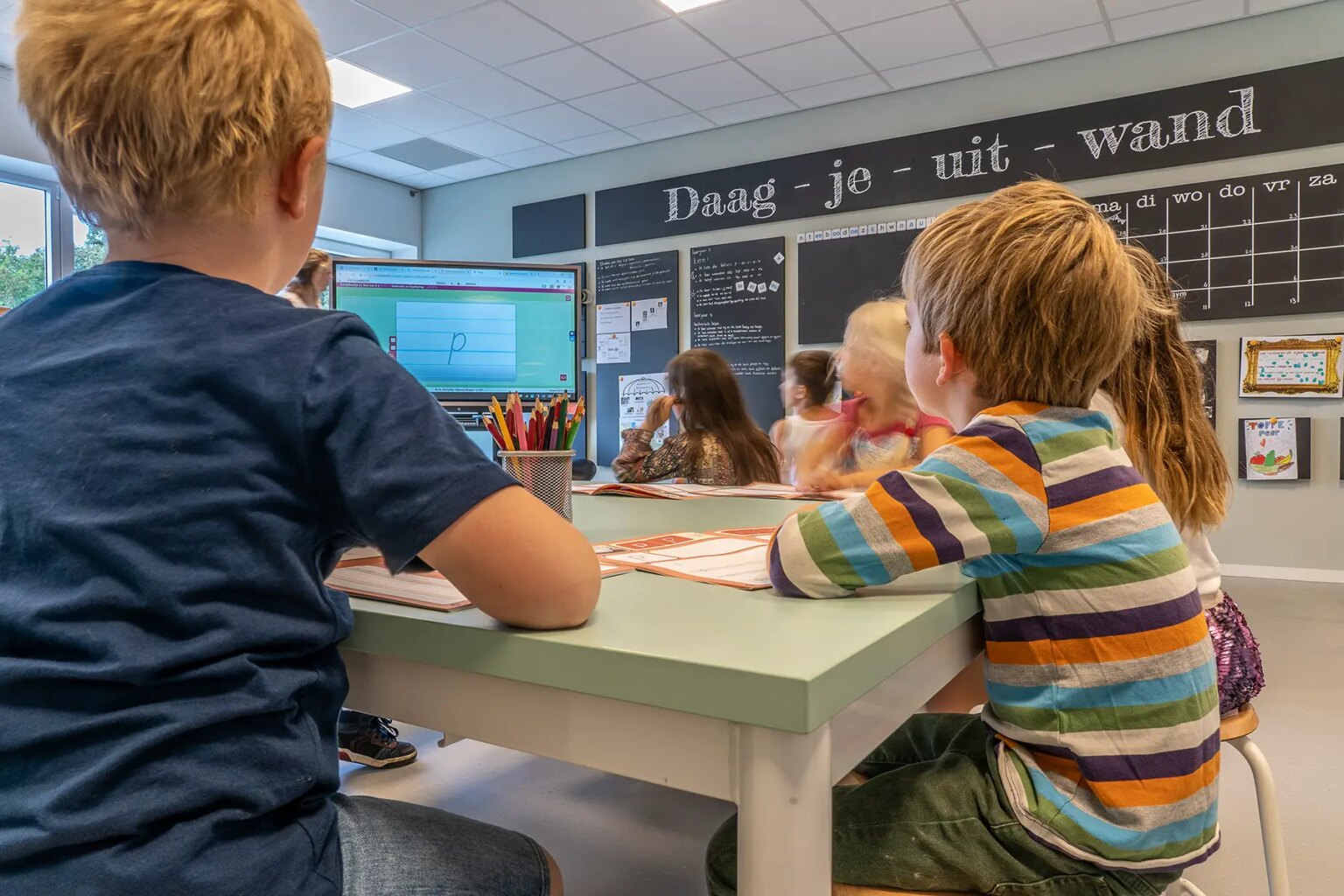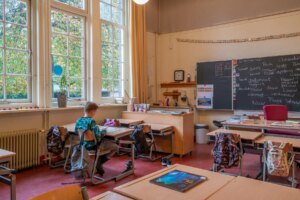Overall, the education system in the Netherlands works very well, but it is very different from most other countries. Furthermore, some of the policies vary per city. That said, schools following particular religious or pedagogic principles have had equal state funding to public schools since 1917.
This includes numerous international schools in the Netherlands of which some are also subsidised. International education is available at both state-funded and private schools throughout the country, and seventeen primary schools have officially implemented bilingual education.
This helpful guide to the education system in the Netherlands, provided by Amity International School Amsterdam, explains everything you need when choosing a suitable school for your child in the Netherlands. It includes the following sections:
- Education in the Netherlands
- Preschool education in the Netherlands
- Primary education in the Netherlands
- Secondary education in the Netherlands
- Schools in the Netherlands
- Higher education system in the Netherlands
- Examinations in the Netherlands
- Education costs and funding
- Educational support for expat students
- Support for children with special educational needs (SEN)
- Homeschooling in the Netherlands
- Useful resources
Amity International School Amsterdam
Amity International School Amsterdam is a global learning environment located in Amstelveen for students from 3–18 years old. As an accredited IB World School, it offers the IB Continuum for the Primary Years Programme, the Middle Years Programme, and the Diploma Programme. Amity provides a broad, thorough education for all ages that combines academic excellence with a variety of opportunities in sciences, the arts, and more. See what future Amity could offer your children today.
Education in the Netherlands
Most children start primary school (called basisschool in Dutch) the day after their 4th birthday; whenever that is throughout the year. From their 5th birthday, all children are obliged to go to school (leerplicht).
Primary school has eight grades, group 1 through group 8 (age 12). Afterwards, students transfer to a secondary school. They are obliged to go to school until the end of the school year in which they have turned 16; provided they have obtained a diploma (startkwalificatie). If not, they should continue studying until age 18, either full-time or part-time.
School fees and contributions
Although the education at most Dutch schools is free, they do ask for a small voluntarily parent contribution (ouderbijdrage) with which they pay for extra things like school trips, celebrations (Sinterklaas / Christmas), a dedicated music teacher, or a pupil-run vegetable garden. Some schools base the rate of the contribution on the household income of the parents.
The Ministry of Education, Culture, and Science (OCW) is the Dutch ministry responsible for education, culture, science, research, gender equality, and communications. Apart from a handful of private, fee-paying schools, all schools are funded by this ministry. The ministry sets quality standards, core objectives, attainment targets, and social objectives all schools need to adhere to. However, individual schools fill in the details of the curriculum and budget allocation.
The Dutch school attendance law (leerplichtwet) is very strict. Children are only allowed to miss school because of very specific reasons; for example, an important family celebration or emergency, or if you can prove that your job doesn’t allow you to take time off during the school holidays.
School holidays in the Netherlands
School holidays in the Netherlands, for primary and secondary schools, are set nationally with staggered start/finish times across three regions in order to spread out most of the holiday traffic.
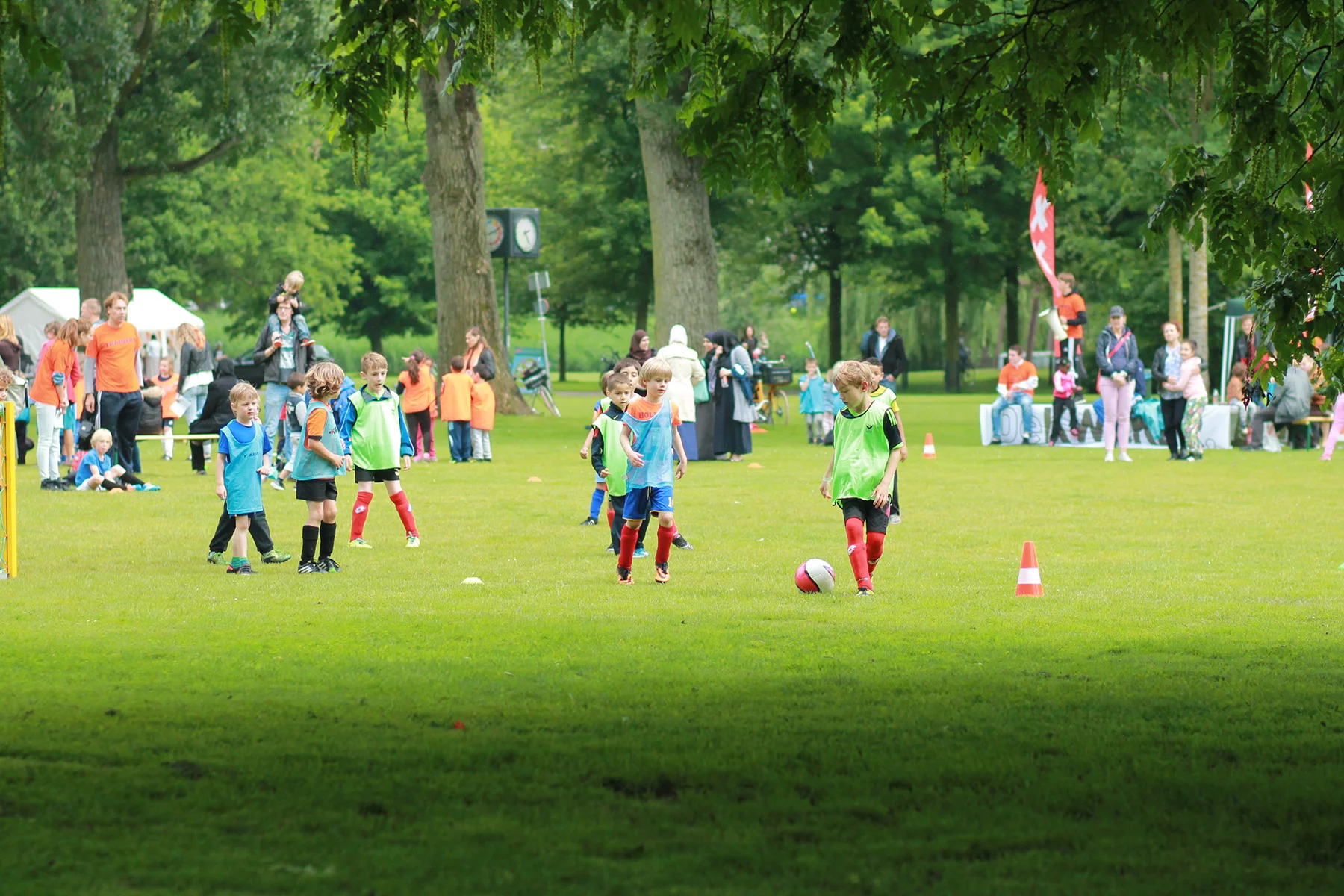
The summer holiday lasts for six weeks. During the school year, there is at least one week of holiday after each period of about six weeks; this is so both pupils and teachers can recharge their batteries. For the exact dates, click here. While the school terms of private and international schools can be different, the school year lasts in total a minimum of 40 weeks.
The quality of the Dutch education system
The Dutch rank highly in many fields of education. In fact, the World Economic Forum has ranked the Netherlands as the third-most educated country in the world. Furthermore, in the renowned global Pisa/OECD rankings for 15-year-olds, the Netherlands is listed as one of the highest in performance. A third of Dutch 25-64 year olds hold a university degree, which is significantly higher than the OECD average of 24%.
The Netherlands also scores among the world’s top countries for equity in education opportunities, and all 13 state-funded Dutch universities typically score well in The Times Higher Education World University Rankings.
The Ministry of Education, Culture, and Science is currently working together with teachers, school principals, and educational specialists on a new national curriculum. This is designed to be more future-proof and connect even better to the future learning goals of the current students.
Preschool education in the Netherlands
Before children reach primary school age, they could go to daycare or preschool, or a combination of the two. Daycare is meant for children from about 10 weeks up to four years old. Most daycares only offer full-day contracts for one to five fixed days per week. In most cities, preschool (voorschool) starts at age two, and is offered for an average of 15 hours per week, spread out over three days.
Usually preschool is more structured than daycare and they prepare the preschool children for primary school in a playful way, according to a designated program. The focus is on Dutch language acquisition, social skills, and motor skills. Most preschools are connected to a primary school, but run by a different organization. In most cases, your child won’t get automatic access to the connected primary school.
If both parents work (or a single parent works in a single parent family), they should be entitled to a tax rebate (kinderopvangtoeslag) for the daycare costs through the Belastingdienst. This amount is not only dependent on the income of both parents, but also on how many hours they use daycare.
Also in the case of preschool, working parents can apply for the tax rebate. If only one or neither of the parents works, they will get a subsidy from the municipality (gemeente) for the preschool costs.
Primary education in the Netherlands
In the Netherlands, there is a distinction between openbare and bijzondere schools. The openbare schools are both funded and run by an independent foundation that was originally set up by the government. They are always non-religious. About two-thirds of the population attend bijzondere (special) schools, which have their own board and often follow particular religious or pedagogic principles. Usually, the religious schools are fairly moderate in terms of religion and are open to non-religious children, and those who have a different religion. However, this varies per school.
Most primary schools combine groups 1 and 2 (ages four and five) in the same class, the kleuterklas, which is comparable to kindergarten. Here they focus on learning through play, social skills, gross and fine motor skills, structure, independence, and gradual preparation for reading and writing. Formal reading and writing start in group 3, at age six.
The national average number of students in a government-funded school class is 23 to 24. In many bigger cities, you will find more children per class; most schools have a maximum of 28 to 30. One of the main reasons parents choose one of the few private schools are the smaller classes. From group 3 to group 8, most schools have one age group per class. Exceptions are the Montessori and Jenaplan schools, where they combine three age groups.
Different education philosophies
Choice of educational philosophy is very important for many parents in the Netherlands. It is important to understand the differences between the philosophies to be able to make the best choice for your child.
For example, at Montessori schools, children are taught to become independent, and they often work at their own pace. In Dalton schools, they learn to make their own realistic plans and schedules, and work in groups on projects. In Jenaplan schools, the community plays an important role, and Waldorf (vrije) schools have a strong focus on nature and mainly teach through stories, poems, recitals, and plays.
School opening hours
Schools may decide their own hours. Usually, school starts between 8:30 and 8:45, and ends between 15:00 and 15:15. There is a lunch break for about 45 minutes to 1 hour, during which the children can either go home or have lunch at school (overblijven/TSO). For the children who stay at school, an additional fee (overblijfgeld) has to be paid. They have to bring their own lunch from home. Weather permitting, they play outside before or after lunch. The teachers also have a lunch break and the school asks volunteers, after-school care teachers, or parents to supervise the children.
Some schools have a continuous schedule (continurooster), where all pupils have lunch at school in the classroom with their teacher. Their lunch break is shorter and the school ends earlier than the schools that have overblijven.

On Wednesdays, most schools close at around 12.30pm for the day. Wednesday afternoons are usually filled by playdates, birthday parties, sports clubs, and music lessons. Primary schools are required to offer after-school care to their pupils. Usually, they contract an external organization (BSO). The BSO teachers will come and pick up the children from school, and then parents/ guardians can pick them up at the BSO location before closing time. During school holidays and other days that the school is closed, the BSO is open all day. Parents have to arrange and pay for the BSO separately, for which they may get a tax rebate (Kinderopvangtoeslag).
Bilingual schools in the Netherlands
By law, Dutch schools have to start teaching English as a subject by group 7 (about age 10) at the latest. More and more schools have decided to start earlier, sometimes from group 1. Such schools are VVTO schools, which refers to Early Foreign Language Education.
Seventeen schools in the Netherlands are official bilingual pilot schools. They may teach up to 50% of the time in English. The pilot is due to finish in 2023, and if the results are positive, there are likely to be more bilingual schools afterwards.
It is important to note that the bilingual schools are Dutch schools, which offer English on top of the Dutch curriculum. All the tests are still in Dutch. Some bilingual schools require at least one of the parents to be fluent in Dutch.
Student testing and monitoring
Most Dutch primary schools don’t give much homework, especially not in the early years. Twice per year, from group 2 or 3, the pupils take a test to measure their progress. They call this the pupil monitor system (leerlingvolg-systeem, LVS). With these tests, schools can spot any learning difficulties like dyslexia at an early stage. If they detect something, the child might need some additional support.
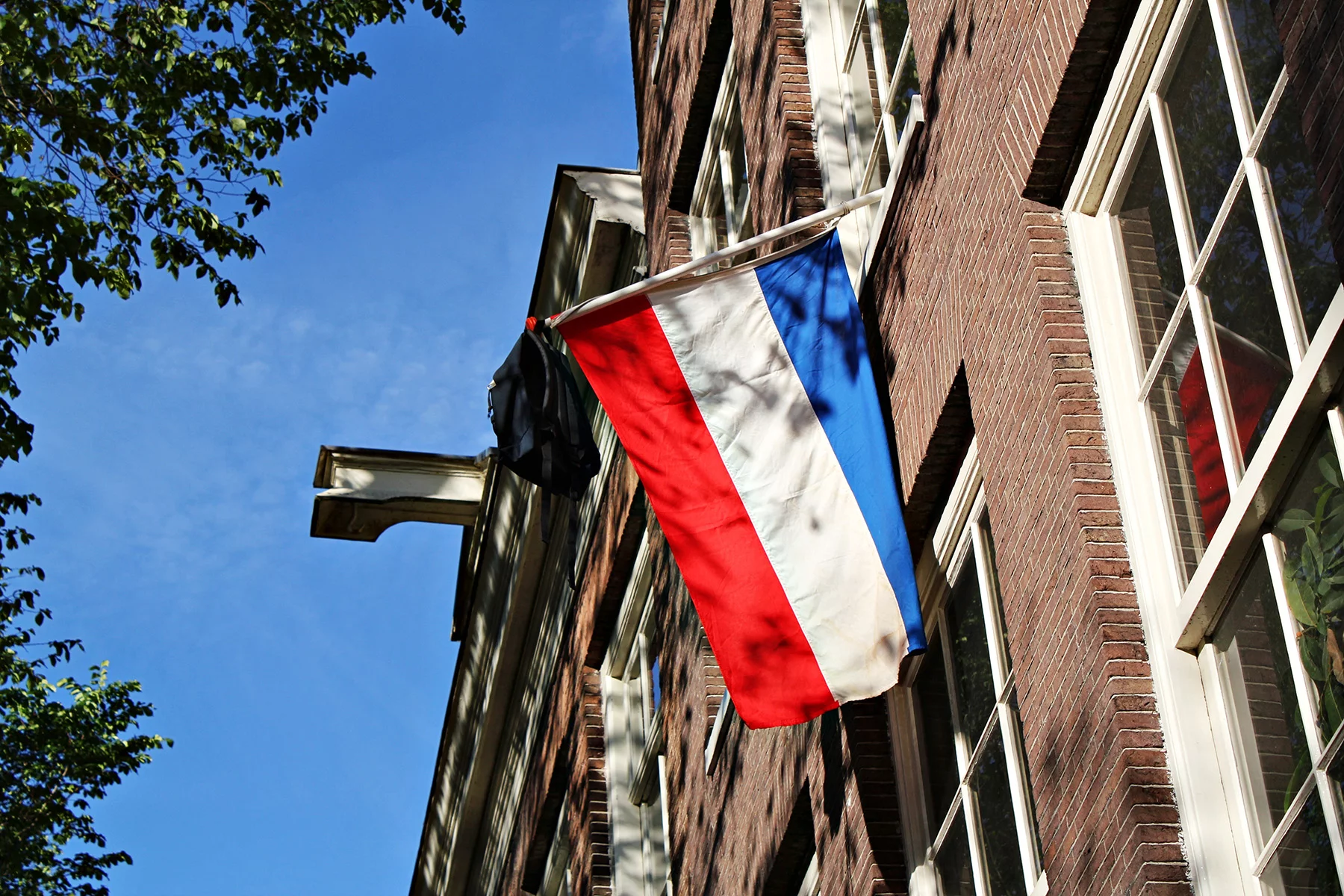
The tests are also a way to measure the quality of teaching. The pupils can’t pass or fail these tests and there are no direct consequences based on the outcome of the tests alone. The children don’t need to prepare for the tests, and younger ones (especially) are not aware that they are taking a test. Often the teachers only inform the parents of the results, and not the pupils. There is usually no competition between the children based on the test outcomes. Some schools take these tests more seriously than others, so it is always good to inquire in advance.
Student reports and grades
Most schools hand out a school report twice a year with grades that range from ‘very good’ to ‘insufficient’, and invite parents to discuss their children’s results in a 10-minute meeting. It is fairly common for a child to repeat or skip a year, and people do not usually frown upon this.
In group 8, the last year of primary school, the pupils take the central end test for primary education (Centrale Eindtoets Basisonderwijs). This is an aptitude test that measures what the pupils have learned in the past eight years. The pupils answer questions which test their Dutch language and comprehension skills, mathematics, study skills, and world orientation. This is a combination of history, geography, biology, and world religions. The subject of world orientation is optional for schools.
Previously a foundation called Cito designed these tests. Since school year 2014-15, the Ministry of Education has officially approved a few other tests besides the Cito test (e.g, Route 8 or IEP). All primary school students must take part in the end test.
Before the end test takes place, the group 8 teacher assesses what level of secondary education would best fit each pupil. They base their recommendation on various factors including the pupil’s test scores from group 6, their intelligence, attitude towards learning, eagerness to learn, interests, and motivation. Based on the outcome of this end test and the recommendation of the teacher, the pupils get a school recommendation (schooladvies) for the appropriate level of secondary education.
If the test results are higher than the teacher’s recommendation, the secondary school advice may be upgraded. If the test results are lower, then the teacher recommends the way forward.
Secondary education in the Netherlands
There are basically three levels of high school education, which go by the acronyms of VMBO, HAVO, and VWO. Here is a summary of them all:
- VMBO – is preparatory secondary vocational education, which usually takes four years, and is followed by MBO;
- HAVO – senior general secondary education, takes five years, and is followed by HBO (Hogeschool/University of Applied Sciences);
- VWO – pre-university education takes six years, and students can continue to university (WO).
Subject choices
Many secondary schools offer a mixed-level bridge class in the first year (sometimes for the first two years). After obtaining a diploma from one level, you may proceed to the next level. This route usually takes some extra time. Some secondary schools are running a pilot where you can take different subjects at different levels. It looks like the system will become a bit more flexible in the future.
At VMBO schools, students can choose between more theoretical or more practical subjects. They also choose a sector in which to specialize: Economics (e.g., administration, commercial services, fashion), Agriculture (e.g., agriculture, environment, and food technology), Technical (e.g., construction, graphics, automotive, electrical), or Care and Welfare (e.g., care, sports, services, safety).
Trade and MBO diplomas
After the theoretical level of VMBO, students may either go to the fourth year of HAVO, or to the MBO, where they can obtain a trade diploma. With a theoretical MBO diploma, you may move onto HBO, which is a university of applied sciences.
About halfway through their HAVO or VWO course, students have to choose a profile in which they will eventually graduate. The options are: nature and health, nature and technology, culture and society, or economics and society. With your HAVO diploma, you may go to VWO or HBO.
VWO is in general more analytical and research-oriented than HAVO, and consists of two branches: Atheneum and Gymnasium. Gymnasium offers Latin, Ancient Greek, and Classical studies, while Atheneum does not. Both give equal access to (research-oriented) university (WO).
Like primary schools, some secondary schools are religious, or based on an educational philosophy. Whatever type of primary school your child has attended, they can go to any type of secondary school; you don’t need to stick with the same philosophy if you don’t want to.
Schools in the Netherlands
Besides Dutch schools that belong to the Netherlands’ education system, there are also a good amount of international schools to choose from.
International schools
The Netherlands is one of the few countries in the world in which the government subsidizes international education. The subsidized international schools are intended for children who live temporarily (two to three years) in the country because of their parents’ jobs; however, they won’t have to leave if you end up staying longer. The fees are around €4,500 to €5,500 per year, per child, and many schools have a waiting list.
The private international schools generally start at €15,000 per year. These schools usually have shorter waiting lists and tend to offer more facilities, and after-school activities. Most of the international schools follow the thematic International Primary Curriculum (IPC) or the inquiry-based IB (International Baccalaureate) curriculum.
The government of the country the international school is related to may subsidize it, for example, the French, German, and Japanese schools. The European Union funds the European schools, and these are free for the children of parents who work for a European agency or institute. Other children pay between €5,000 and €7,000 per year. However, in case of limited availability, they have to give priority to the children from the target group.
Find a full list of secondary international schools in the Netherlands.
Special needs schools
Under the ‘Inclusive Education’ (Passend Onderwijs) Act, as many children who require additional support as possible should be able to go to the regular school in their neighborhood. The school where you apply is responsible for providing a suitable learning place for your child. If needed, they can buy in the support of external, specialized SEN teachers. However, these are usually only available for a few hours per week. The experience and expertise schools have with children with special needs varies greatly.
If the support required turns out to be too intensive or specialized, children might be referred to a dedicated special needs school. Sometimes the pupils of the special needs school stay there for the whole primary school period, followed by a special needs secondary school; while other pupils transfer to a regular school after a few years of intensive support.
Higher education system in the Netherlands
Since most employers ask for qualified employees, students are highly encouraged to obtain a diploma. After the above-mentioned types of secondary school, students can continue with many different types of higher education.
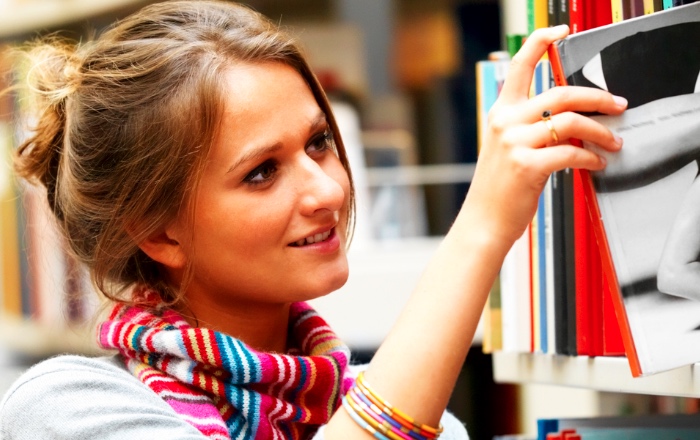
After VMBO, students may continue with MBO, to obtain a diploma with which they could become, for example, an assistant, childminder, secretary, security officer, office employee, hairdresser, or nurse.
The education that follows after HAVO is called HBO, which is University of Applied Sciences, and usually takes four years. At the HBO, students can obtain a bachelor’s degree. Students with an MBO diploma also have access to the HBO.
A lot of people working in business and trade are HBO graduates, and also for example, primary school teachers, architects, art directors, journalists, translators, midwifes, artists, pilots, and nurses with a management position.
Bachelor’s and masters’s programs
Some HBO institutes also offer a master’s program, for which you often need to have some relevant work experience. You can also do your bachelor’s at HBO, followed by a master’s at university. With your certificate of your first year of HBO (propedeuse), you may also continue your education at university.
Most university studies take four years too, with some years added for possible specializations. University (WO) graduates could, among other professions, become lawyers, psychologists, doctors, surgeons, researchers, notaries, professors, engineers, or scientists.
The Dutch higher education system is state-funded and students pay a bit over €2,000 per year for university and HBO, of which first-year students pay half. One of the measurements the government has taken to diminish the national teacher shortage is that students who train to become a teacher pay half of the study fees during the first two years of study. Students might also qualify for a study grant, based on their performances and parents’ income.
More and more university HBO and MBO studies are available in English. From age 21 you can do a colloquium doctum with a university. This is an exam for people who don’t have the right (VWO or HBO) diploma to go to university, however can prove they are at the right academic level. Many universities also offer part-time study programs that students can combine with their job, or other commitments. Read our guide to Dutch universities for more information.
Examinations in the Netherlands
As previously mentioned, all primary schools have to take the end test of primary school, however the schools may decide which of the government-approved tests they choose.
All students of the same school take the same type of test, while some adaptations have been made for children with special needs. Furthermore, all secondary schools in the Netherlands take the same national exams in their last year, regardless of their education system, approach, or philosophy.
With the right diploma for secondary school, you may move up to higher education. A few studies are oversubscribed and require applicants to take part in an assessment or build a portfolio before they can enter. However, most university studies are non-selective and don’t involve a standard entry test.
Education costs and funding
Municipalities sponsor parents who cannot afford the voluntary parent contribution at the government-funded schools. They can also get a contribution towards after-school activities and other costs related to raising children. Some companies pay for the international education of the children of their employees, and sometimes these fees are tax-deductible. It is a good idea to ask your HR department if this is the case.
Educational support for expat students
Especially in the bigger cities, there are a lot of non-Dutch children who attend Dutch schools; particularly if their parents plan to stay in the Netherlands for a longer time. Children aged six or older who don’t speak Dutch yet are usually referred to a newcomer or Dutch immersion class first. Here they will learn the language in small classes with specialized teachers. The newcomer class takes on average one year. The pupils are usually promoted to the next grade after that.
There are a few schools that have an internal newcomer class, and a couple of separate schools for newcomers. In some cities, the newcomer classes start at age 4. How much additional support a (regular) school can offer with the Dutch language varies per school.
Support for children with special educational needs (SEN)
If the support your child requires turns out to be too specialized or intensive, the regular school may refer them to a dedicated special needs school. You will also need a toelaatbaarheidsverklaring (tlv) – literally translated as ‘permissibility declaration’.
There are three main types of special needs education: Speciaal basisonderwijs (SBO), and speciaal onderwijs at both primary (SO) and secondary (VSO) levels.
At these schools, the class sizes are smaller than at regular schools, and the children receive more tailor-made and specialized support and therapies focused on their specific needs.
At SBO schools, the pupils follow the same program and have the same core objectives as regular primary schools. Besides more personal attention and tailor-made support in a smaller setting, they also get more time to complete primary school (until age 14, instead of age 12).
Within the special needs schools (speciaal onderwijs), the Dutch education system offers four cluster schools based on the type of special needs. The teachers teach at different levels in the class, and most children follow the regular curriculum.
Speciaal onderwijs schools
The speciaal onderwijs schools are divided into the following clusters:
- 1 – schools for children who are visually impaired or blind;
- 2 – is for children who have serious communication problems (deafness, speech disorder, etc);
- 3 – schools welcome children who have cognitive or physical disabilities, or a chronic illness that makes going to school difficult;
- 4 – schools are for children with psychiatric or serious behavioral issues (autism, ADHD, PDD-NOS, ODD, CD, etc).
After a special needs primary school, a child can go to either a regular secondary school (with extra support, if needed), or a special needs school at secondary level (VSO). A special needs school at secondary level needs to make an educational plan with the child and guide them towards a suitable career. If a pupil makes enough progress at the special needs school, they may transfer to a regular (primary or secondary) school.
A specialized educational consultant (onderwijsconsulent) can assist your family in this process. An onderwijsconsulent is an independent educational specialist who has a lot of experience with SEN children. Parents don’t need to pay for the help of this consultant.
Homeschooling in the Netherlands
The Dutch education system generally doesn’t allow homeschooling. However, some exceptions are made for families who cannot find a school in their vicinity which matches with their religion or life convictions. You should research the possibilities of homeschooling before you apply for any type of school. Once your child is in the system, it is very hard to get out again.
Useful resources
- Nuffic – information on the national pilot for bilingual schools
- Ministry of Education, Culture, and Science
- International schools in the Netherlands
- New2NL – independent education consultant for international families in the Netherlands;
- Lowan – Dutch immersion classes for foreign children age six and older.
